Personal Training Master is located in London, England. This business is working in the following industry: Business services. You can contact Personal Training Master at 020 3633 2299.
Don't wanna be here? Send us removal request.
Text

Understanding the Different Types of PCOS
Introduction: Are you struggling to make sense of the various types of Polycystic Ovary Syndrome (PCOS)? Look no further! In this comprehensive guide, we'll break down the different PCOS types and provide you with valuable insights. Get ready to take control of your health and understand your body better.
Insulin-Resistant PCOS Discover how insulin resistance plays a crucial role in PCOS and affects your overall well-being. Uncover effective strategies to manage insulin resistance and regain hormonal balance. Take charge of your health today!
Post-Pill PCOS Are you experiencing PCOS symptoms after discontinuing birth control pills? Dive into the world of post-pill PCOS, explore its unique challenges, and learn proven techniques to alleviate symptoms naturally. Reclaim your vitality and embrace a hormone-friendly lifestyle.
Inflammatory PCOS Learn about the fascinating connection between inflammation and PCOS. Explore the impact of chronic inflammation on your reproductive system and discover powerful anti-inflammatory solutions to restore harmony within your body. Take the first step towards a healthier, inflammation-free life.
Hidden-Cause PCOS Unravel the mysteries of hidden-cause PCOS, a lesser-known type with underlying factors that often go unnoticed. Gain insights into the root causes and uncover personalized strategies to address them. Empower yourself with knowledge and reclaim control over your health.
Conclusion: Now that you're equipped with knowledge about the different types of PCOS, it's time to take action. Embrace a holistic approach to your well-being and make informed decisions for long-lasting results. Remember, understanding your body is the key to overcoming PCOS. Start your journey towards a healthier and happier you today!
0 notes
Text
Weight Loss Medications and Type 2 Diabetes: An Effective Approach
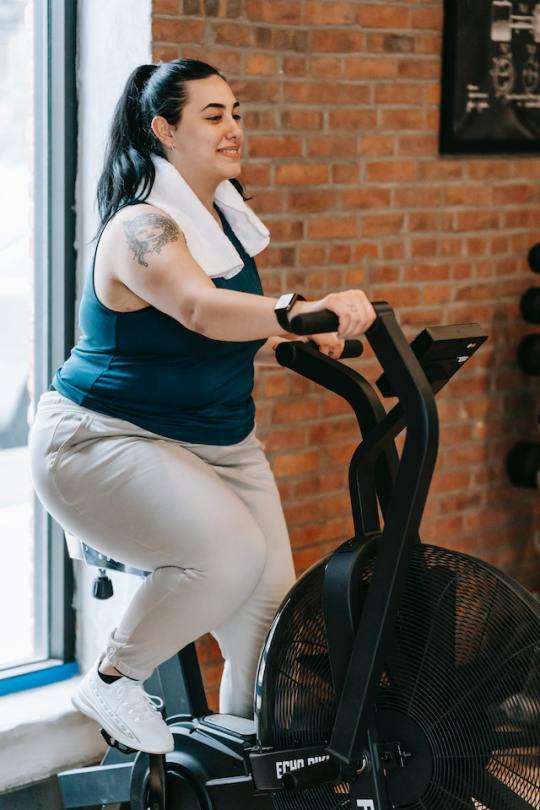
For individuals struggling with weight loss while managing type 2 diabetes, weight loss medications can be a valuable tool. These medications, when used in conjunction with a healthy eating plan and regular physical activity, can help individuals achieve successful weight loss and improve diabetes management. This article explores the use of weight loss medications and their effectiveness in the context of type 2 diabetes.
Weight loss medications work by suppressing appetite, reducing absorption of nutrients, or increasing the feeling of fullness. They can be prescribed by healthcare professionals for individuals who have not been able to achieve weight loss through lifestyle modifications alone. However,it's important to note that weight loss medications are not a magic solution and should be used under the guidance of a healthcare provider.
There are several weight loss medications approved by regulatory authorities for use in individuals with type 2 diabetes. Some of these medications include glucagon-like peptide-1 (GLP-1) receptor agonists, sodium-glucose cotransporter-2 (SGLT2) inhibitors, and combination medications.
GLP-1 receptor agonists work by mimicking the effects of the hormone GLP-1, which increases insulin secretion, slows down stomach emptying, and reduces appetite. These medications not only aid in weight loss but also help improve blood sugar control. Some common GLP-1 receptor agonists include liraglutide and semaglutide.
SGLT2 inhibitors, on the other hand, work by blocking the reabsorption of glucose in the kidneys, leading to increased glucose excretion in the urine. This mechanism helps lower blood sugar levels and promotes weight loss. Empagliflozin and dapagliflozin are examples of SGLT2 inhibitors used in the management of type 2 diabetes.
Combination medications, such as fixed-dose combinations of GLP-1 receptor agonists and basal insulin, provide the benefits of both medications in a single injection. These combinations can help individuals achieve weight loss while also addressing insulin deficiency.
It is important to note that weight loss medications should be used in conjunction with a healthy eating plan and regular physical activity. These medications are most effective when combined with lifestyle modifications. Additionally, weight loss medications may have side effects and contraindications, so it is crucial to consult with a healthcare provider before starting any medication.
Successful weight loss with the help of medications requires ongoing monitoring and adjustments. Regular follow-ups with your healthcare provider are essential to evaluate the effectiveness of the medication, manage any side effects, and make necessary changes to your treatment plan.
In conclusion, weight loss medications can be an effective approach for individuals with type 2 diabetes who are struggling to lose weight through lifestyle modifications alone. These medications, when used under the guidance of a healthcare provider, can aid in weight loss and improve blood sugar control. However, it is important to remember that weight loss medications should be used in conjunction with a healthy eating plan, regular physical activity, and ongoing medical supervision.
0 notes
Text
Understanding Type 2 Diabetes and the Importance of Weight Loss

Type 2 diabetes is a chronic condition characterized by high blood sugar levels due to the body's inability to properly use insulin. While genetics and lifestyle factors contribute to its development, being overweight or obese significantly increases the risk of developing type 2 diabetes. Weight loss plays a crucial role in managing this condition effectively. This article explores the steps you can take to achieve successful weight loss and improve your overall health.
One of the first steps towards weight loss is adopting a healthy eating plan. Focus on consuming nutrient-dense foods such as fruits, vegetables, lean proteins, and whole grains while limiting the intake of processed and sugary foods. Balancing your meals with the right proportion of carbohydrates, proteins, and fats is essential. Incorporating portion control can help regulate your calorie intake and facilitate weight loss.
Regular physical activity is equally important for weight loss and managing type 2 diabetes. Engage in activities that raise your heart rate and make you break a sweat, such as brisk walking, jogging, cycling, or swimming. Aim for at least 150 minutes of moderate-intensity aerobic exercise per week, along with strength training exercises at least twice a week to build lean muscle mass. Consult with your healthcare provider before starting any exercise regimen to ensure it is safe and suitable for you.
In addition to healthy eating and exercise, it is crucial to monitor your blood sugar levels regularly. This will help you understand how certain foods and activities affect your blood sugar and enable you to make informed decisions regarding your diet and exercise routine. Work closely with your healthcare team to set target ranges and create a personalized management plan.
Weight loss can be challenging, so it is important to seek support from healthcare professionals, friends, and family. Consider joining support groups or seeking the guidance of a registered dietitian or certified diabetes educator. They can provide you with the necessary knowledge, motivation, and accountability to help you stay on track and achieve your weight loss goals.
In conclusion, weight loss plays a vital role in managing type 2 diabetes effectively. By adopting a healthy eating plan, engaging in regular physical activity, monitoring blood sugar levels, and seeking support, you can take proactive steps towards achieving successful weight loss. Remember, every small step counts, and with dedication and persistence, you can improve your overall health and well-being.
0 notes
Text
Personal Trainer for Nutrition Diet Plan

Importance of Choosing the Right Personal Trainer for Nutrition Diet Plan
Do you want to make changes to your diet to meet a specific goal (weight management, bodybuilding, rehab after surgery or injury) but are unsure of how to proceed?
Are you frustrated because a diet plan that worked for a friend isn’t working for you?
You need professional help from a personal trainer in London.
Why need a personal trainer?
Because based on your goal, your diet plan will vary. Also, you need to consider factors such as your age, gender, genetics (family history), metabolism level, body shape and composition, dietary preferences, food allergies, lifestyle, existing ailments, etc.
Consult a certified personal trainer for a nutritional diet plan who will:
design a customised nutrition diet plan after a comprehensive one-on-one assessment of your health, medical history, needs, and goals
help you implement the customised nutrition diet plan
help you stay motivated and reach your goal without taking unnecessary risks or damaging your health.
H2: Essential Tips for Choosing the Best Personal Trainer for Nutrition Diet Plan
Some tips to help you in your search for the best personal trainer for nutrition diet plan:
Credentials: Check online for the qualifications and certifications of the personal trainer. A degree in Nutrition and Dietetics with a sound knowledge of Anatomy and Physiology is essential. Certification should be from a recognised organisation or authority.
Experience and Expertise: Check for the experience and expertise of the personal trainer. How many years of practice does the trainer have as a fitness coach and nutritionist? Is he/she specialised in a particular branch (healthy eating plan, weight loss programme, etc.)? Does he/she have experience working with people having similar goals as you? Has he/she won any awards? Do his/her clients have remarkable success stories?
Goal alignment: Define your goal and discuss it with your personal trainer. Goal alignment is key as you and the personal trainer will be working together. Discuss your goal with a trainer. Your goal can be to lose/gain weight, reduce fat, build muscle, prevent muscle loss, improve fitness, detox your body, or rehab after an injury. The trainer should be versatile to handle any type of health goal. You can also consult for a healthy eating plan to manage a health condition (diabetes, osteoporosis, menopause, PCOS, sciatica pain). During your trial session with the personal trainer, assess whether he/she has understood your goal. Does he/she give your goal due importance? Is he/she genuinely listening to your concerns, limitations, preferences, and needs?
Philosophy: Do you feel comfortable around the personal trainer? Does he/she treat you with respect, empathy, patience, and mindfulness? What is his/her motivational style? Tell your trainer about yourself – are you slow in accepting changes? Do you respond to rewards or reprimands? Avoid coaches who use negativity to motivate their clients.
Availability and schedule: Check the availability and schedule of the personal trainer. Does it match your timings and needs? Is he/she available only in person or on phone calls or emails as well? Between sessions, does he/she offer support via phone or email? Is he/she flexible with his/her timing? Does he/she offer the option of coming to your home/workplace? Which areas does the personal trainer London cover? Also, check with the fitness coach whether online personal training in London is available.
Compatibility: Do not underestimate the importance of compatibility between you and your trainer. Is your trainer ready to accommodate you according to your timings and availability? Is he/she a good listener? Does he/she take a keen interest in your journey and is genuinely interested in helping you?
Cost and value: You are investing in your health by using the expertise of a personal trainer. There is a cost and value associated with this. Find out the fees and the services included. Are the fees within your budget? Do not just go by the monetary figure. Find out about the payment terms and other policies (cancellation charges, if any). You can also ask for 1 or 2 free demo sessions.
Progress tracking: It is important to monitor progress. Is the nutrition diet plan working for you? Does your trainer maintain records of the parameters (e.g., BMI, waist-to-hip ratio, body fat percentage in the weight loss programme) that are relevant to your goal? Does he/she review your progress periodically and give you feedback? Does he/she review the plan and if need be, modify it?
Use the above tips to choose a personal trainer for nutrition diet plan. Ask trusted friends and family members for referrals to experienced personal trainers.
Browse online for personal trainer London, check the testimonials / reviews on the websites.
If possible, contact past/current clients to know about their experience. If it suits you, get online services from the personal trainer.
Most personal trainers offer a free trial session , so book a consultation to meet in person, get a feel of the trainer’s personality and ask the right questions to help you find the best personal trainer for nutrition diet plan.
0 notes
Text
Transform Your Body, Transform Your Life: Personal Trainer Secrets Revealed
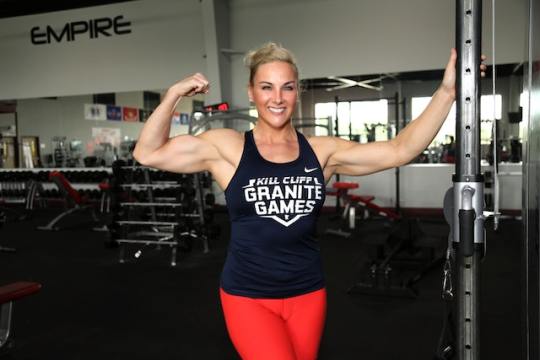
The Role of Personal Trainers in Body Transformation
Are you overweight, underweight, unfit, or injury prone?
Are you unhappy or depressed about your body weight and body shape?
Are your efforts to transform your body futile, despite going on a diet and working out at the gym?
Body transformation isn’t just about making yourself look good. It is about changing your body shape, mindset, health status, and your life for the long term.
The challenge is that there is a “no one size fits all” approach to Body Transformation.
You need to rely on the services of a competent personal trainer to help you transform your body.
He/she will assess you ‘one-on-one’ and based on your health, history, limitations, and needs, will design for you a personalised workout routine and a customised nutrition plan.
Your personal trainer will offer personalised attention, support, follow up. and motivation throughout your journey whilst ensuring that the results are sustained for the long term and your health and safety are not compromised.
Secrets of Personal Trainers
Personal training secrets, the use of which have proven successful in health and wellness transformation, are: focus on both diet and exercise, along with lifestyle changes!
It is likely that the workout routine you are doing is incorrect, leading to muscular imbalances, postural problems, and lack of flexibility.
Your personal trainer will design for you an effective workout routine to transform your body, taking into account your needs, limitations, and goal of fitness transformation.
Some dos and don’ts:
Include a mix of exercises
Don’t overdo exercise – it is neither effective nor healthy and may cause injuries
Don’t Skip Warm-Ups and Cool-Downs.
Exercise with the correct form and technique – to minimize the risk of pain and injury and maximize the effectiveness of the workout
The main goals of fitness transformation include building muscle, reducing fat, and enhancing your flexibility, balance, endurance, and functional strength.
Your personal trainer will also prepare for you a customised nutrition plan based on your age, gender, genetics (family history), metabolism level, BMI, muscle-to-body fat ratio, dietary preferences, food allergies, lifestyle, existing ailments, etc.
Some dos and don’ts:
Eat natural foods such as fruits, vegetables, nuts, lean protein, and whole grains.
Use healthy fats (polyunsaturated and monounsaturated fats).
Stop eating processed foods, fast food, white bread, white rice and foods high in sugar and saturated and trans-fatty acids.
Cut back on sugar
Stay hydrated with water (No aerated drinks).
In addition to diet and exercise, personal training secrets on lifestyle changes (stop smoking, cut back on alcohol, sleep enough and sleep well, manage stress) will help you transform your body.
Exercise Techniques for Transformation
Most programmes to transform your body focus solely on weight training to get results that probably look good on the surface, but lack balance, flexibility, correct posture adjustments, and advanced body coordination.
A well-designed body transform workout routine will ensure below results without causing pain or injury:
Favorable effect on body fat distribution, with a reduced wait-to-hip ratio
Better results in maintaining the weight loss
Improved levels of cardio-respiratory fitness
Improved flexibility, balance and strength
As is the case with diet, there isn’t a “standard workout strategy” that will suit everybody!
Consult a personal trainer who will provide you with extra benefits (that a gym cannot provide) such as:
A specially tailored workout routine (based on your current physical assessment and specific needs)
Personalised attention (so that you are doing the exercises in the right form and technique without risk of injuries)
Monitoring your progress and, if need be, revision of your workout strategy
Best results are obtained when the exercise routine has a combination of exercises that have their own benefits and work on different parts of your body. Also, it is more fun and less monotonous to have variety in your exercise routine!
Strength training (or resistance training) helps you to build more muscle (as muscles burn more calories than fat). Examples include lifting weights, push-ups, squats, sit-ups, Pilates, climbing stairs, walking, running etc.
Cardiovascular training (or aerobic exercises) increase your heart rate and make your lungs work harder than normal. They are proven to burn more fat than a strength workout and are helpful to lose stubborn “belly fat”.
Flexibility and mobility exercises help to create the required balance for your muscle groups, and reduce the risk of injury so that you get the most out of your workout.
Are fitness transformation and body transformation your goals? Work with a competent and supportive personal trainer because every transformation needs to be individualized.
Your personal trainer’s experience, expertise, and personal training secrets will help you transform your body and make you healthier, stronger, more energetic, and happier. Are you ready for your health and wellness transformation? Your certified personal trainer Kensington is just a consultation away! Book your free consultation now.
0 notes
Text
Personal Trainer for Pilates for Different Purpose
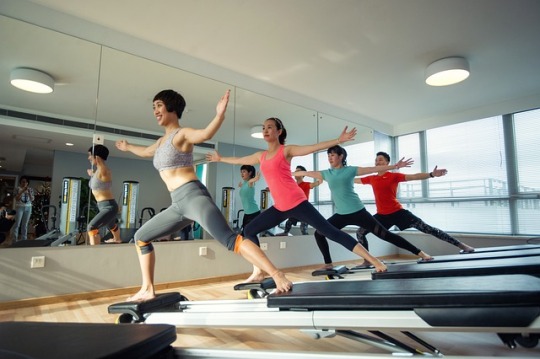
Are you looking for a complete body transformation?
If you want to improve your core strength, posture, flexibility, and coordination and also want relaxation, manage stress and reduce anxiety, then you are on the right page! Check our personal trainer for Pilates.
Let me explain to you about Pilates.
Physical exercise for Pilates is considered a form of exercise that can assist you with your health and exercise goals. Pilates is a smart core-focused and low-impact body movement that is ideal for strengthening muscles of your spine, hips, knee, ankle, and abdomen. It also helps you with neck and shoulder imbalances and reduces pain levels throughout your joints.
Types of Pilates
There are several types of Pilates, but only your Personal trainer for Pilates can decide what is best for you. Usually, the physical exercise for Pilates involves
Classic Pilates: It combines mat and apparatus work following a sequence designed to move the body through a full range of movements.
Mat Pilates: Suitable for beginners, mat Pilates involves learning and perfecting the fundamental Pilates movements.
Reformer Pilates: It makes use of a reformer machine and involves more dynamic and intense body movements.
Clinical Pilates: This offers a tailored experience for your specific health issue and requires personal training for Pilates. Pregnancy, injury, chronic pain, and surgery are examples of the needs of personal trainer for Pilates.
Contemporary Pilates: It is the combination of classic Pilates and physiotherapy exercises.
I know you must be thinking about What are the needs of personal trainer for Pilates? Let me explain it to you.
The Benefits of Personal Trainer for Pilates
Here are a few answers to your question Why personal trainer is best for Pilates?
Improve your core strength: Personal training for Pilates will help you build a strong core. It will strengthen muscles of the lower back, hips, pelvis, and abdomen which will make your everyday tasks easier.
Motivate you to achieve your health goal: When you struggle and fail to achieve your health goals, a Personal trainer for Pilates will set short and attainable goals so that you remain motivated and on the track to success.
You are in focus. As it is your one-to-one training, your instructor will execute the workout plan that your body needs. Suppose you are having back pain; your personal trainer for Pilates will select body movements to target the strengthening of your back muscles. So you receive 100% attention, and therefore you get complete benefits of Pilates to achieve your health goals.
Convenient and Flexible: Personal training for Pilates is convenient for both you as well as your personal trainer for Pilates. You can decide the time slot according to your work schedule. Isn’t that a good work and life balance? You don’t have to rush to the gym as per the working hours of the gym. So it will save precious time.
Understands your health better: If you have any injury or a chronic health problem, a personal pilates trainer will design a pilates programme that will help you recover fast. If you are pregnant, low-impact physical exercises for Pilates will be customized accordingly.
Offer new exciting experiences: Personal trainers will introduce new and exciting physical exercises for Pilates from time to time so that your workout remains fresh and new.
Different Physical Exercises for Pilates
Here are the top 5 physical exercises for Pilates
Shoulder Bridges: Shoulder bridges are a great exercise to help strengthen the back side of your body. Strengthening these muscles helps you improve running, jumping, and posture.
Superman: Itis an exercise that strengthens the muscles that support the spine and pelvis, which helps to improve posture. It involves laying face down with the arms and legs outstretched, followed by a controlled lift of arms, chest, and legs off the ground, thus emphasizing hamstring, glute, and lower back strength.
The hundred: It is a traditional Pilates exercise where you lie on your back with your legs crossed like a tabletop, pump your arms up and down, and breathe deeply. It strengthens core muscles and improves blood circulation.
Plank: It works on the core muscles as well as the upper and lower bodies. It involves holding a push-up position while maintaining a straight line from the head to the heels.
The roll-up: It improves abdominal control and strengthening. It is a great exercise for those suffering from low back pain.
While doing Pilates, your focus should be on proper form, breathing technique, and control while performing. A personal trainer helps for different Pilates and inspires you to stand tall with confidence and grace.
Pilates is perfect for those who want to become healthy and happy, and now you know why a personal trainer is best for Pilates! So, come and try Pilates in London. For more information on How personal trainer helps for different Pilates, please get in touch online or contact a Personal Pilates trainer in London.
0 notes
Text
10 Tips for Choosing the Perfect Personal Trainer
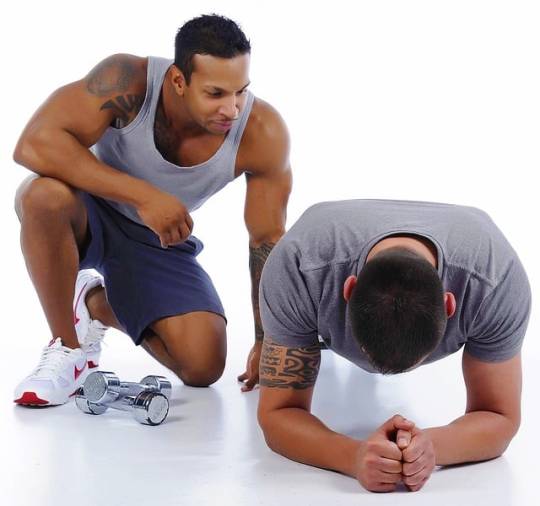
Importance of Choosing the Right Personal Trainer
Are you ready for a healthy transformation? Is exercise, workouts and healthy food on your mind? And what if you have a personal trainer for helping you achieve your fitness goals? A certified personal trainer makes a difference. What’s stopping you? Browse for personal trainers London and you will surely find the right trainer in London if you do your research right.
Essential Tips for Choosing the Perfect Personal Trainer
So, what is it that you need? A rehab schedule, muscle strengthening, overall fitness or just staying active? I have 10 easy tips for you as you begin your search for a personal trainer:
Know your need: Do you know what you need? Is your goal fitness, rehab after an injury or weight loss? Before you go on a search spree for personal trainers London, know your needs so that you can look for the correct workout specialist.
Check the credentials: Investing in your health is the wisest decision. Before you choose your trainer check for qualifications and certifications. The workout specialist you need should have the necessary certification. Get to know more about the trainer from his/her website.
Specialization: ‘Experience makes a man perfect’. Every trainer will have his perfection through vast experience. With experience comes expertise in certain areas. A trainer with experience and expertise will deliver perfection in his work while you achieve your goals with his/her help.
Are your goals aligned? Once you are sure about the expertise of the trainer, check if you both have goal alignment. Your trainer should also be a good listener and try to understand your goals and plan a tailor-made workout for you. Avoid choosing a trainer who gives no ears to your needs or goals. You can ask for 1-2 trial sessions so that you will understand whether you can withstand that approach and continue it longer.
Philosophy: Do orders and scolding make you perform better or do you like to be motivated more softly? Try to understand the philosophy on which the motivational style of the trainer is based. This philosophy can either motivate or demotivate you. Learn about the trainer from reviews and choose for yourself. A positive, lively trainer full of enthusiasm will uplift and mentor you in your fitness journey.
Trainer’s schedule: The availability and schedule of the personal trainer are important. It should go hand in hand with your timing and your needs. Check how flexible your trainer is and if he/she is available according to your requirements.
How well you get along: Compatibility with the personal trainer is important. Ask yourself- Is your trainer ready to accommodate you according to your timings and availability? Is he/she talking to you and is genuinely interested in helping you? If the answers are positive, choose that trainer.
Affordability: The cost and value of consultation with an online personal trainer will differ from the one in the gym and the private workout specialist. Check what you can afford. You may even go a little above edge for a personal trainer with good credentials and customized consultation.
Location: If it is not possible to have an online personal trainer, select a convenient location where you can visit the trainer.
Progress: You should have fitness goals, and the trainer should track them in his way. Be sure that the trainer has some mechanism to track your progress and that you have an idea as to how your sessions are helping you. This motivates you to perform better. Based on the progress, the trainer can decide on further course of action, like a change in diet or workout plan, like increasing the number of repetitions. If the trainer is not tracking your achievements, it is difficult to measure your progress. Many trainers maintain a detailed spreadsheet of several parameters like weight, body measurements, body mass index, waist-to-hip ratio, etc., for their clients. This spreadsheet helps you to know how far you have reached in your fitness journey.
I am sure these tips will be helpful. It is necessary to get a tailor-made workout plan and a customized diet plan that focuses on your need. Concentrate on reviews given by other people working under the trainer.
Do your thorough research as ‘one size doesn’t fit all.’ For example: If two players had a knee injury during a game, the extent of damage might be different and will need a different approach toward rehabilitation. Similarly, two ladies working in the same office, both having lower back pain, need a proper differential diagnosis to find the real cause of the pain. The personal trainer will then chalk out different regimens for each based on their overall health, disease severity, age, muscle strength, and many more factors.
Simply Google the websites of personal trainers London, check the testimonials on the websites, and ask members of friends for recommendations and references, and you are all set to hire a workout specialist for yourself.
0 notes
Text
Achieve Your Fitness Goals with a Personal Trainer in East London

Introduction:
Are you looking to get in shape, improve your fitness, or achieve specific health goals?
Hiring a personal trainer can be a game-changer on your fitness journey. In East London, there are dedicated and experienced personal trainers who can provide you with the guidance, support, and motivation you need to reach your goals. In this article, we'll explore the benefits of working with a personal trainer in East London and how they can help you transform your fitness routine.
Why Choose a Personal Trainer in East London?
Sub-heading: Expert Guidance Tailored to Your Needs When it comes to achieving your fitness goals, personalized guidance is key.
A personal trainer in East London will assess your current fitness level, discuss your goals, and create a customized workout plan that suits your specific needs.
Whether you're a beginner or an experienced athlete, they will design exercises and training sessions that challenge you while keeping you motivated.
Accountability and Motivation Staying motivated can be tough when you're working out alone. That's where a personal trainer can make a real difference.
They will hold you accountable for your workouts and provide the motivation you need to keep pushing yourself. With their support and encouragement, you'll be less likely to skip workouts and more likely to stay committed to your fitness routine.
Proper Technique and Injury Prevention One of the main advantages of working with a personal trainer is learning the correct form and technique for various exercises.
They will ensure that you perform each exercise safely and effectively, reducing the risk of injuries.
Whether you're lifting weights, doing cardiovascular exercises, or practicing yoga, a personal trainer will guide you in maintaining proper form, maximizing results, and minimizing the chance of injury.
Efficient and Effective Workouts Personal trainers in East London are experts in designing efficient and effective workouts.
They will help you optimize your time at the gym, making the most out of each session. By incorporating a variety of exercises and training methods, they can keep your workouts interesting and prevent plateaus.
With their guidance, you'll experience improved strength, endurance, flexibility, and overall fitness levels.
Sub-heading: Support and Encouragement Embarking on a fitness journey can sometimes feel overwhelming, but you don't have to go through it alone.
A personal trainer will be there to support and encourage you every step of the way. They will celebrate your successes, help you overcome obstacles, and adjust your training plan as needed. With their expertise and positive reinforcement, you'll develop confidence in your abilities and stay motivated to achieve your goals.
Conclusion:
If you're ready to take your fitness to the next level, hiring a personal trainer in East London is a wise investment. They will provide you with expert guidance, accountability, and motivation while ensuring your safety and maximizing your results.
With their support, you'll be well on your way to achieving your fitness goals and enjoying a healthier, more active lifestyle. Don't hesitate to reach out to a personal trainer in East London and start your fitness journey today.
0 notes
Text
Personal Trainer North London
Are you dreaming of a healthier lean version of you that would look strong and in shape and feel more energetic, healthier and younger? If you are located in North London personal trainer expertise will help you start transforming your body and changing your life into who’d want to become or be. Business Details :
[email protected] 020 3633 2299 Monday - Fri : 6:30am to 9pm Saturday : 8am to 3pm
Basement 3 - 5 Wardour Street London W1D 6PB
0 notes
Text
Personal Trainer North London
Are you dreaming of a healthier lean version of you that would look strong and in shape and feel more energetic, healthier and younger? If you are located in North London personal trainer expertise will help you start transforming your body and changing your life into who’d want to become or be.
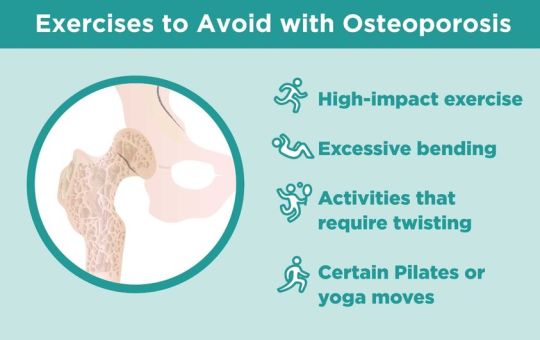
0 notes
Text
10 Tips for a Successful Body Transformation: How to Reach Your Goals
Body Transformation
Are you tired of feeling unhappy with your body? Do you want to transform your physique and reach your fitness goals? It's always possible to start a body transformation journey, and with the right mindset and strategies, you can achieve your dream body. This article will discuss ten tips for a successful body transformation.
Table of Contents
Introduction
Set SMART Goals
Create a Plan and Stick to It
Track Your Progress
Focus on Nutrition
Incorporate Strength Training
Increase Your Cardiovascular Activity
Get Enough Sleep
Stay Hydrated
Surround Yourself with Supportive People
Stay Consistent
Conclusion
FAQs
Set SMART Goals
Before embarking on a body transformation journey, it's essential to set realistic and specific goals. Use the SMART goal-setting framework, which stands for Specific, Measurable, Achievable, Relevant, and Time-bound. For example, instead of setting a goal to "lose weight," a SMART goal would be to "lose 10 pounds in 10 weeks by following a healthy diet and exercise plan."
Create a Plan and Stick to It
Once you have set your goals, it's time to create a plan that will help you achieve them. Your plan should include a nutrition plan, exercise routine, and lifestyle changes that will support your body transformation goals. It's essential to stick to your plan consistently, even when you face challenges or setbacks.
Track Your Progress
Tracking your progress can help you stay motivated and on track towards your body transformation goals. Use a journal, spreadsheet, or app to track your daily food intake, exercise routines, and body measurements. Regularly reviewing your progress will help you identify areas where you need to improve and celebrate your successes.
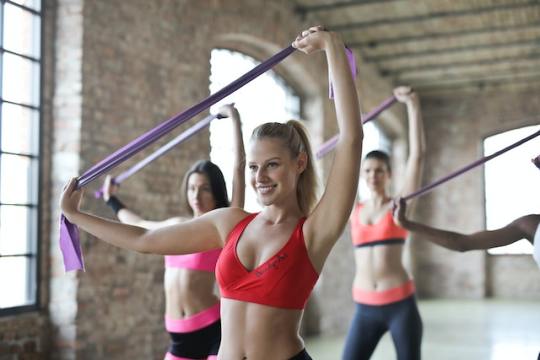
Focus on Nutrition
Nutrition is a crucial component of any successful body transformation journey. Focus on consuming nutrient-dense whole foods, such as fruits, vegetables, lean proteins, and healthy fats. Avoid processed foods, sugary drinks, and excessive alcohol consumption. Consider consulting with a registered dietitian to develop a personalized nutrition plan that supports your goals.
Incorporate Strength Training
Strength training is an essential component of any successful body transformation journey. Resistance training can help you build muscle mass, increase your metabolism, and improve your body composition. Incorporate strength training exercises, such as squats, deadlifts, and bench presses, into your workout routine at least two to three times per week.
Increase Your Cardiovascular Activity
Cardiovascular exercise is another critical component of a successful body transformation journey. Cardiovascular exercise can help you burn calories, improve your cardiovascular health, and increase your endurance. Aim to incorporate at least 30 minutes of moderate-intensity cardiovascular exercise, such as brisk walking, cycling, or swimming, into your routine at least three to four times per week.
Get Enough Sleep
Getting enough sleep is crucial for a successful body transformation journey. Sleep is essential for muscle recovery, hormone regulation, and overall health. Aim to get at least seven to nine hours of quality sleep per night. Avoid consuming caffeine, alcohol, or stimulating activities before bed, and create a comfortable sleep environment.
Stay Hydrated
Staying hydrated is essential for a successful body transformation journey. Water helps regulate body temperature, maintain blood volume, and transport nutrients throughout the body. Aim to drink at least eight to ten glasses of water per day, and avoid sugary drinks or excessive caffeine consumption.
Surround Yourself with Supportive People
Surrounding yourself with supportive people can help you stay motivated and accountable towards your body transformation goals. Find a workout partner, join a fitness community, or hire a personal trainer to help you stay on track
0 notes
Text
Avoiding High-Impact and High-Resistance Exercises with a PCL Injury
A posterior cruciate ligament (PCL) injury is a tear or sprain of the ligament located in the knee joint. The PCL is one of the main ligaments that helps stabilize the knee and prevent excessive movement. PCL injuries are less common than anterior cruciate ligament (ACL) injuries, but they can still cause significant knee instability and pain.
Symptoms of a PCL injury include pain and swelling in the knee, difficulty walking or bearing weight on the affected leg, and a feeling of instability in the knee. In some cases, the knee may "give out" or buckle during weight-bearing activities.
Diagnosis of a PCL injury typically involves a physical examination and imaging tests such as an MRI. Treatment options for a PCL injury include rest, ice, and physical therapy to help improve strength, flexibility, and stability. In more severe cases, surgery may be necessary to repair or reconstruct the damaged ligament.
It is important to work with a physical therapist or doctor to develop an individualized rehabilitation program that takes into account the specific needs of your injury. Avoiding exercises that put excessive stress on the PCL while it is healing is a crucial part of the recovery process.
It is important to note that recovery time can vary depending on the severity of the injury and the individual's condition. In some cases, it may take several months for an individual to fully recover from a PCL injury.
0 notes
Text
Herniated Disc: Exercises to Heal Quickly
Is unbearable back pain interfering with your daily life, work and social routine? This may be due to a herniated disc in the spine.
What is a herniated disc?
Herniated disc or slipped disc is a common condition that often occurs in middle-aged people. Your vertebrae hold a soft cushion with a jelly-like nucleus in between each vertebra.
When this jelly-like material bulges out it appears as a herniated disc.
While you may have such a herniated disc at any point of your spine, research says that it is common in the lower back usually affecting more your L1, L2, L3, L4, L5 and S1 vertebraes.
Many of you may be suffering from herniated lumbar disc over your lifetime.
Herniated disc exercises can help you with routine activities by managing pain.
Exercise for Sciatica from a Herniated Disc
Herniated disc exercises are specially structured to help you deal with the immense pain stemming from a herniated disc that bothers your sciatic nerve.

Here are a few exercises that will relieve intense pain and provide long-term rehabilitation.
SPINAL DECOMPRESSION: This exercise is a must as it creates spaces between the vertebrae easing the pressure on the disc.
You may do the exercise as follows:
Let your body hang by holding your hands on the bar placed at a height or from the top of the door.
Hang for at least 10 - 30 seconds.
Repeat this 3 times.
As you hold the bar and hang with the help of your hands on the bar letting the rest of the body loose, the spaces between vertebrae open up to release the pressure on the discs.
Spinal decompression might give you quick pain relief.
PRONE ON ELBOWS: This method will help mobilise your leg pain into your back where the exercises will help you strengthen the back muscles efficiently and relieve the pain.
The doctors refer to this as ‘centralisation of symptoms.’
You can do the following steps:
Lie on your stomach. This is your prone position.
Now slowly prop yourself up on your elbows.
Keep your hips in contact with the floor.
Hold this prop-up position for 10-15 seconds.
Now return to the prone position (lying face down).
If you are suffering from back pain always perform this exercise slow and in a gentle manner.
As you get used to this exercise, gradually try to hold for 5 - 30 seconds.
Keep a goal of 10 such repetitions.
STANDING EXTENSION:
Have you checked your posture during daily activities?
A poor posture may cause pain.
The standing extension exercises are easy to carry out and give a lot of relief.
Just do the following steps:
Stand upright in a good posture.
Now take both hands and place them on both sides of your lower back.
Use your hands to push your pelvis forward and extend your spine back.
Follow the extension with your neck this will make you face the ceiling.
Begin with 10 repetitions. Do this at least 2-3 times.
Talk small breaks while working and try this exercise, it will be a great relief for your herniated disc in the back.
How Jazz helps you heal herniated disc?
If you are diagnosed with herniated lumbar disc and have bad pain in your back?
The laser sharp customised exercises for back pain can help you heal quicker.
An elite personal trainer specialised in herniated disc rehab is best for you as he will create the best-herniated disc exercises for you.
He will guide you with the correct posture and way to do routine activities.
Tailor-made herniated disc exercises will help you heal pain quickly.
The Sciatica pain rehabilitation programme will take care of your worries so that you can carry on a painless routine.
Jazz is the best back pain rehabilitation expert, an elite personal trainer, and sports nutritionist in London, and has trained marathon runners and helped rehabilitate Olympic athletes.
Just book a free consultation with Jazz, the best elite personal trainer, and sciatica rehab expert.
0 notes
Text
Effective Strategies For Athletes To Reduce Their Bodyweight
An obese individual who follows a sedentary lifestyle that mostly consists of watching television or similar activities that do not require physical movement often only starts to experience the adverse effects of obesity once health problems start to develop. This could include a diagnosis of type 2 diabetes, high blood pressure or heart disease1 – in severe cases, it could even mean a cancer diagnosis2. Perhaps the person suffers a heart attack or stroke due to their bodyweight.
For an athlete, however, the adverse effects of obesity or being overweight can be experienced much earlier in most cases. There are numerous ways in which being overweight or obese can lead to reduced athletic performance. For example, recent studies found that even as little as 3.4 pounds of an increase in body fat can make a significant different in an athlete’s performance and make the winner the loser3.
Obesity and overweight are linked to reduced stamina and energy levels, as well as causes excess pressure on the joints. This means that not only will a person get tired too soon during a race, but they will also be placing more pressure on their feet and knee joints, as well as other body parts. In turn, this can greatly increase their risk of sustaining an injury, which could set them back and even lead to some sort of disability, which may be temporary, but still unpleasant.
Simple and Effective Ways to Slash Body Weight
The loss of even small amounts of body fat, often considered insignificant amounts, can greatly affect athletic performance; thus causing increased stamina and a faster run. Slashing body weight does not have to be a difficult task, and implement smart methods to reducing body fat percentage can make the results appear faster and help an athlete experience the benefits of reduced body fat at a gradual pace.
The first step to successful fat loss in athletes is to understand how weight gain happens in the first place – which is when calorie intake exceeds the amount of calories burnt through physical activity on a daily basis. For athletes that are busy on the field, a higher calorie intake is often recommended to ensure they eat enough carbohydrates so that they have an adequate amount of energy for their time on the field. Eating more than what will be used during that session on the field, however, leads to an increase in body fat. Thus, adjusting a diet so that it includes fewer calories than what will be used is the first step to successfully slashing body fat.
Many foods have been shown to assist with burning excess fat without causing a person to experience significant reductions in energy levels. Oats, sweet potatoes, winter squash, flax seeds, cabbage vegetables, avocados, quinoa and chia seeds have all been proven to offer these benefits4.

The Benefits of Weight Loss for Athletes
Athletes can obtain a lot of benefits from losing excess body fat that is holding them back on the track. The most significant benefit would be the fact that an increase in speed can be experienced by insignificant amounts of fat loss. Higher concentrations of body fat percentage can lead to a loss of muscle mass, which means an important benefit to consider is improvements in lead muscle mass.
Since a lighter body weight means less energy is required for certain types of physical activities, it also means that reductions in body fat can make a person experience a significant increase in endurance since their bodies would not require as much energy it did before the weight loss came into effect. Speed, as well as agility, are also two areas that are usually improved considerably amongst athletes once body fat percentage has been reduced successfully5.
For athletes participating in certain sports, such as ice skating and dancing, the reduction in body weight may also contribute to a better and more attractive physical appearance, which is important in these types of sports as performance is not the only factor being judged here.
Author information
Jazz is a clinical Harley Street London nutritionist, a natural detoxification weight loss expert, elite personal trainer, 2nd generation Pilates trainer, with over 20 years of experience in the health and fitness industry. During the years spent working as a clinical nutritionist and elite trainer, Jazz has worked with people from different professions including bankers, actors and actresses, doctors, CEOs, and many others. Jazz doesn’t only help you detox, but he also helps you have a healthier lifestyle.
0 notes
Text
ACL Injury and Tennis – All you need to know
The anterior cruciate ligament (ACL) is a major stabilizing ligament in the knee. It is a common injury in sports, particularly in sports that involve cutting, pivoting, and jumping, such as basketball, soccer, and tennis.
In tennis, an ACL injury can occur when a player makes a sudden change in direction, lands awkwardly from a jump, or stops suddenly while running. It can also occur as a result of overuse, such as when a player repeatedly stresses the knee in the same way.
Symptoms of an ACL injury include pain, swelling, and instability in the knee. The knee may feel like it is giving out or "buckling" when weight is placed on it.
Treatment for an ACL injury may include physical therapy, bracing, and surgery. Surgery is typically recommended if the injury is severe or if the knee is unstable. Rehabilitation after surgery can take several months and may involve a combination of exercises to strengthen the muscles around the knee and improve range of motion.
It is important for tennis players to use proper technique and to warm up and stretch properly before playing to reduce the risk of an ACL injury. Wearing appropriate shoes and using protective gear such as knee pads can also help reduce the risk of injury.
The anterior cruciate ligament (ACL) is a band of tissue that connects the thigh bone (femur) to the shin bone (tibia) and helps to stabilize the knee joint. It is located in the middle of the knee and is one of the main ligaments responsible for preventing the tibia from sliding out in front of the femur.
An ACL injury occurs when the ligament is stretched or torn. This can happen when the knee is subjected to a sudden twisting or bending force, such as when a tennis player makes a sudden change in direction or stops suddenly while running. It can also occur as a result of overuse, such as when a player repeatedly stresses the knee in the same way.
Symptoms of an ACL injury include pain, swelling, and instability in the knee. The knee may feel like it is giving out or "buckling" when weight is placed on it. It may also be difficult to straighten or bend the leg.
Diagnosis of an ACL injury is typically made through a physical examination and imaging tests such as an MRI. Treatment may include physical therapy, bracing, and surgery. Physical therapy can help to strengthen the muscles around the knee and improve range of motion. Bracing can help to stabilize the knee and protect the ACL while it is healing. Surgery may be recommended if the injury is severe or if the knee is unstable. The goal of surgery is to repair or reconstruct the ACL.
Rehabilitation after surgery typically takes several months and may involve a combination of exercises to strengthen the muscles around the knee and improve range of motion. It is important for tennis players to use proper technique and to warm up and stretch properly before playing to reduce the risk of an ACL injury. Wearing appropriate shoes and using protective gear such as knee pads can also help reduce the risk of injury.Regenerate response
0 notes
Text
Pilates Exercises for Lower Back Pain to Help Relieve Tension
Lower back pain is a common problem among people of different ages.
The reason behind its high prevalence is the wide spectrum of lower back pain causes.
From herniated discs and muscle spasms to the non-specific type of back pain.

However, no matter what the cause is, using Pilates exercise customisation you can successful use Pilates for rehabilitation to help you get rid of your back pain symptoms.
Research into using Pilates for injury rehabilitation
“No Pain, no gain” applies to some exercises, but not to Pilates; Pilates is a pain-free, gentle style of exercise that also yields amazing results without leaving you sore the day after.
In fact, researches have proven that Pilates exercises can effectively:
Improve mobility,
Reduce the risk of injuries
Decrease muscle soreness
Improve flexibility
Strengthen muscles
Pilates exercises for lower back pain
Is your lower back pain holding you back from enjoying your life to the max?
Try these Pilates exercises for lower back pain to improve your symptoms:
Single-Leg Raises
Do you have poor posture?
You can start with this simple Pilates for Rehabilitation exercise that fires your core muscles and improves your core stability.
Simply lie down with your both knees bent, feet planted on the floor and lift one leg so that both your hip and knee are at right angles.
Make sure you tuck your tummy in, breathe and perform the exercise in slow, controlled manner. Repeat 10-15 times
2. Bridging Exercise
It is time to bring your glutes and hip muscles into play by including this exercise in your Pilates for injury rehabilitation programme.
Lie down with your knees bent and your arms by your side, tuck your tummy in and lift your hip off the floor as far as you can. Hold the position for 5-10 seconds, relax and repeat.
3. Advanced Bridging Exercise
After enjoying the bridging exercise for 2 weeks, it is time to take your glutes and core strengthening to the next level by advancing your bridge training.
This variation further strengthens your glutes, hip and core muscles while also engaging your pelvic floor and diaphragm.
From the same position as bridging, combine bridging with single leg raises by lifting one of your legs to right angles at the hip and knee. Repeat 5-10 times for each leg. Don’t forget to keep breathing as you exercise and tighten your abs throughout.
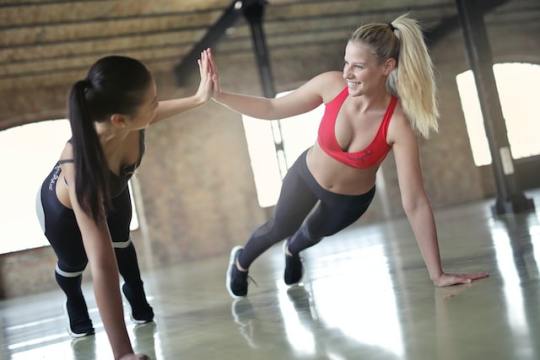
4- Planking Planking is one of the most effective exercises to do while considering Pilates for injury rehabilitation.
It targets all your body muscles at the same time with special focus on your core and back muscles.
To start this exercise, lie on your tummy, lift and support your body on your elbows and toes. Keep your body and neck straight, and make sure you are not holding your breath.
Hold this position for as long as you can. You can start at several seconds and make it longer as your progress. To make this exercise harder, support your body on your hands instead of the elbows.
5- Side Planking
To level up your planking exercises, try the side plank. This exercise challenges your core, obliques, shoulder, hip and certain parts of your leg muscles. It literally activates all your body and helps you improve your posture, strength and balance. Simply sleep on your side, lift your body up supported on one elbow and one foot; keep your body straight and avoid holding your breath. Hold for as long as you can and repeat for both sides.
0 notes
Text
Yoga for Sciatica - 7 Best Yoga Poses for Sciatica Relief
Best Yoga Poses for Sciatica Relief
Are you suffering from pins and needles from the hip and down?
Does your pain increase with walking and standing?
If your answer is yes; you might be complaining of sciatica.
Sciatica pain is a neural pain associated with compression or entrapment of the sciatic nerve at any level from the hip and down the leg.
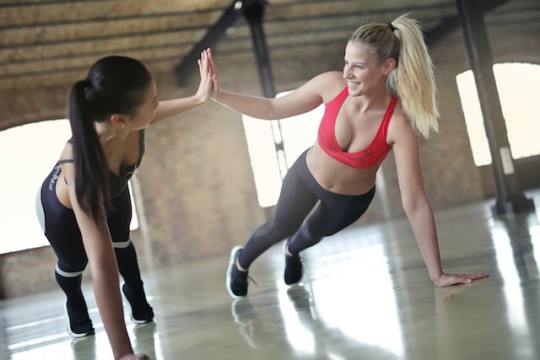
Good news is: sciatica pain is not permanent!
Laser sharp customised Yoga for Sciatica programme can help you conquer the pain and restore your pain-free life.
How can Yoga help?
While customised to your needs yoga stretches for sciatica can help you:
Mobilise your tissues,
Restore your stability, and
Relieve your pain,
Selected and modified yoga poses for sciatica also serve as nerve flossing exercises that will get rid of the tingling.
Moreover, customised Yoga poses for sciatica can help you:
Strengthen your core muscles,
Stabilise your spine, and
Prevent recurrence of sciatica pain.
Grab your mat and let’s start some simple –– yet effective –– yoga poses for sciatica!
Best Yoga Poses for Sciatica Relief
The child Pose
Although this pose looks simple, it stretches your lower back, relieves back muscle tension and improves your low back pain.
All you need to do is sit with your knees bent underneath you, lean forward with your forehead touching the mat and reach with your arms as far as you can.
Hold the stretch for 5-10 minutes while breathing deeply.

Knee to chest pose
If your knees hurt when you assume the child pose, you cannot place much weight on your bent knees, or you are not yet flexible enough, this pose is the one for you.
It brings the same benefits as the child pose; it stretches your back and hip muscles, relieves back pain and tension, and improves your flexibility.
Simply lie down on your back, bend both knees towards your chest and press them as tight as you can, feel the stretch in your back and hold the pose for 5-10 minutes while breathing.
Downward-Facing Dog
Are you ready to take your stretch to the next level?
The downward-facing-dog pose can be your next station.
This pose stretches not only your back, but also your hamstrings, glutes and calves.
It also mobilises your sciatic nerve; this helps you regain your flexibility and get rid of your symptoms.
Simply stand with your feet shoulder-width apart, bend forward and plant your both hands on the mat.
Feel the stretch all over your back and legs, hold the stretch and breathe in and out deeply.
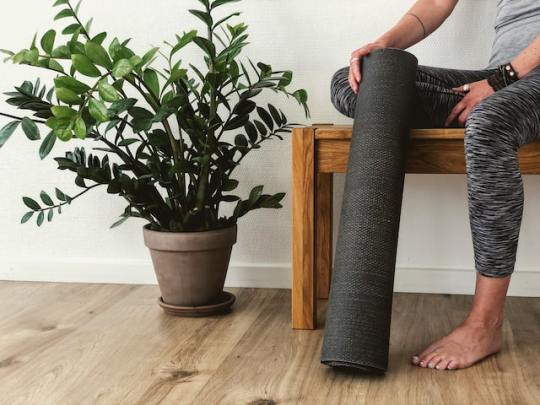
Locust Pose
This is one of the best yoga poses for sciatica, lie down on your tummy with your arms by your side, pull your shoulders down, contract your leg muscles and glutes and lift your shoulders towards the ceiling to clear your chest off the ground and breathe deeply.
Stay in this pose for 3-5 breaths.
On an exhale, release down to the floor.
This pose strengthens your spine, glutes, and thighs.
It stabilises your core and lower back, and promotes flexibility and circulation in your hips.
Reclined Pigeon Pose
If your sciatica nerve is compressed by the piriformis muscle in your hip, it’s time to include this pose in your yoga stretches for sciatica; it will help you reduce the stress on your back and improve your hip muscle flexibility.
Thus, improve your sciatic pain.
Lie down on the floor with your knees bent, cross your legs so that your right ankle rests on the left knee and pull the left knee towards your chest to stretch your right hip muscles.
The bridging Pose
This pose is an effective yoga for sciatica pain because it focuses on strengthening the core, and hip muscles and also activates the deep muscles that support your spine.
Lie down on a mat with your both feet planted on the ground, tuck your tummy in, pull your glutes tight and raise your hips off the floor until your torso and thighs are on the same line.
Hold the position 5-10 minutes while breathing deeply.
Cat-Cow Pose
This pose is one of the best poses of yoga for sciatica pain among all yoga stretches for sciatica because it helps you:
Regain the flexibility of your lumbar spine
Activate your deep core muscles including transversus abdominis, multifidus, and pelvic floor muscles.
Simply, get down on all four, tuck your tummy in and arch your back as high as you can as you inhale deeply, hold up for 5-10 seconds then arch your back down creating a crescent-like shape while exhaling.
Repeat for 5-10 minutes to get the best benefits of Yoga for Sciatica.
Yoga For Sciatica Can Make a Difference
Do you think yoga is only for relaxation?
Or only for healthy individuals who want to get more flexible?
Or just a luxury where people get to meet their friends at yoga classes?
It is time to change your mind about yoga because some yoga stretches for sciatica can change your life. Being a low-impact workout, yoga is the safest activity to start with as a part of a customised and
0 notes